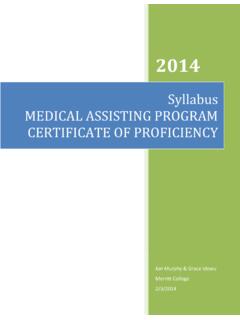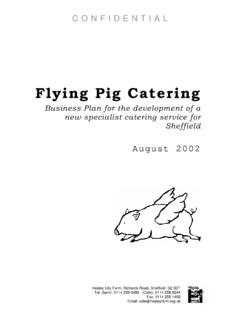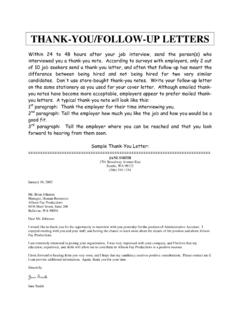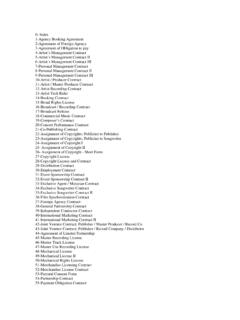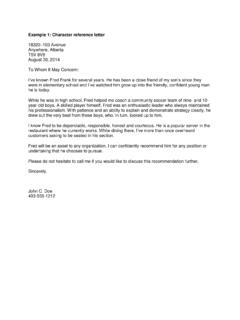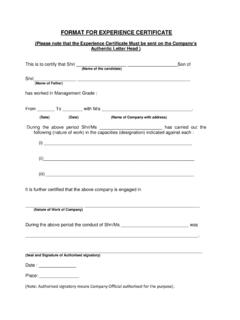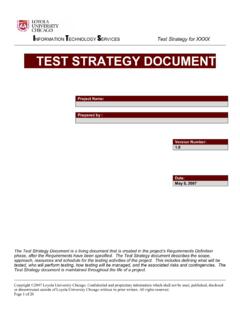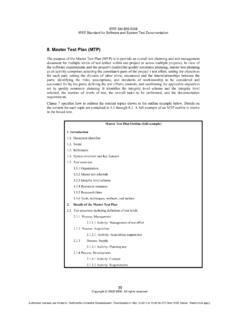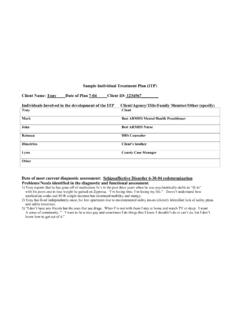Transcription of FIRE INVESTIGATION REPORT
1 RESTRICTED Signature: XXXXXXXXXXXXXXX - Signed on DIIF Page 1 of 7 1. SYNOPSIS Incident No: DFRMO/3000/3/4376 Address: Building XXXXX, AWE Aldermaston, Aldermaston, Berkshire RG7 4PR Date of Call: 03 August 2010 Time of Call: Initial Call: AWE FRS 2106 hrs Initial Call: RBFRS 2110 hrs Initial Call: DFRMO 2156 hrs Incident Commander: Royal Berkshire fire Rescue Service (RBFRS) XXXXXXXXX RBFRS 2203 - 0400 hrs (Approx timings) XXXXXXX RBFRS 0400 -1055 hrs (Approx timings) Reason for INVESTIGATION : The Defence fire & Rescue Service is required to investigate all notable incidents of fire on the Defence Estate and as the designated Enforcing Authority under the regulatory reform ( fire safety ) order 2005 the investigator can where necessary exercise his powers under section 27 of the order .
2 INVESTIGATION Commenced: 05 August 2010 DFRMO Appointed fire INVESTIGATION Officer: XXXXXXXXXXXXXXXXXXXXXXXXXXXXX - Defence fire & Rescue Service. Building Description: The affected building (Picture Identification: No 1 External Shot - taken prior to its refurbishment and the fire ) is a hardened explosive preparation facility. fire INVESTIGATION REPORT This DFRMO fire INVESTIGATION REPORT is based on information available at the time of production and may be subject to change RESTRICTED Signature: XXXXXXXXXXXXXXX - Signed on DIIF Page 2 of 7 Its design consists of seven separate compartments which can only be accessed from the outside, with an approx floor area totalling 200m . The largest room is known as the assembly room and this room contains an inner room known as the 60 gallon mixing room. The assembly room is surrounded on three sides by substantial earth works which are designed to contain laterally an explosive event; channelling any blast wave upwards through the lightly constructed roof.
3 The earth works are constructed all the way to the top of the external walls where these join with the roof structure. The roof is designed in the shape of a right angled 90 degree triangle (which slops downwards from front to rear). The front vertical face of the roof structure is constructed of a frame work of thin steel cross-members which are covered by low melt plastic panels. The external roof cladding is thought to contain asbestos and this also is lightly constructed. The main entrance into the assembly room consists of a double door situated behind a blast wall sufficiently far enough away to allow for the parking of a vehicle for deliveries. To the rear left hand corner of the assembly room (as you face it) is a single door fire exit. 2. EVIDENCE COLLECTION During the visual examination of the scene and throughout the INVESTIGATION a number of digital images were captured. These images provide evidence to support my observations.
4 A digital record has been produced and kept separately from this REPORT . The full photograph log is kept with AWE. All images are numbered and logged chronologically and any photographs used in this REPORT are identified by their allocated identification number. 3. SEQUENCE OF EVENTS Prior to the fire a lacquer preparation process was being undertaken within the assembly room. The manufacturing process utilises a number of chemicals in the manufacture of class 1 explosives, which includes Isopropyl Alcohol (IPA) wetted Nitrocellulose (NC) and Methylethylketone (MEK). These chemicals are known to be highly flammable. This is a previously tried and tested process with no other prior reported incidents at AWE. However, on this occasion there was an initial vapour ignition. Witness testimony points to the initial ignition taking place within an 18 litre plastic bucket containing a solution of MEK and approximately 100 grams of torn strips of NC.
5 Witnesses described hearing a whooshing sound followed by a bright orange flash/ fire which caused minor flash burns to one of the operators. This fire then appeared to die down and continue to burn at mid to floor height whilst the operator with minor injuries was lead from the building by a RESTRICTED Signature: XXXXXXXXXXXXXXX - Signed on DIIF Page 3 of 7 colleague. fire crews arriving some nine minutes later reported seeing flames at least 60 cm s high emanating from the top of a plastic bucket. Some 20 seconds after observing this the whole front face of the room appeared to erupt in a sudden deflagration. It is thought at this point the bucket containing the burning MEK failed and ignited a bag of NC (either by directed burning and/or radiated heat) placed immediately adjacent to it. 4. EXTERNAL VISUAL EXAMINATION Introduction: An external examination of the scene was conducted 03 Sep 2010 (Picture Identification: No 8 External Shot - (16/08/10) Front face).
6 Due to the number of hazards still contained within the building the internal examination was deferred until a later date as AWE and then HSE placed an embargo on entering the building without prior agreement. Observations: Viewed from the outside it can be seen that the assembly room was subjected to an extreme amount of heat as can be borne out by the visible evidence. Following the consumption by fire of the low-melt panels you can see straight into the assembly room from the outside. As a result of the failure of these panels the fire would have self ventilated itself and the sudden in-rush of air would have increased its ferocity and rate of burning. There are a number of visible indicators which point to the intensity of the fire . As you face the front of the building the burn patterns indicate that the internal top right front corner of the ceiling was subjected to an intensive build up of heat. Carbon deposits and the by products of combustion have been completely burnt off and three internal ceiling panels have failed.
7 The internal top left front corner of the ceiling also shows the visible affects of some high intensity burning. Again there are indications that the by products of combustion have been visibly burnt off. All of the steel cross members nearest to the apex of the ceiling show signs of visible twisting and warping. Lightweight cross members have little if no inherent fire resistance. Unprotected steelwork will lose approximately half of its strength in temperatures of 500-550 C. This would indicate that for a limited period of time the temperatures were in excess of this. The worst of the warping occurred in the top left hand corner of the front face of the building. However the evidence would suggest that these steel cross members were not subjected to these temperatures for a long period of time as the roof structure on the whole appears to be structurally sound. The most likely cause for the heat generation within this part of the compartment is that radiated heat spontaneously ignited the kg of NC, located directly across the room from the point of origin.
8 Prior to the fire this NC was placed beneath the table were the weighing scales are situated. On igniting, the NC propelled itself high into the top left corner. On hitting the corner the NC continued to burn fiercely with high intensity, radiating heat and energy causing the left hand steel brace to warp to a greater degree than the other cross members. The double wooden doors leading into the assembly area are charred from the inside. These probably continued to burn for a longer period of time once the MEK and NC was finally consumed. Much of the damage to these doors is attributed to the Remote Observation Vehicle (ROV) which had to force entry into the room. RESTRICTED Signature: XXXXXXXXXXXXXXX - Signed on DIIF Page 4 of 7 Conclusion of the External Examination: The internal photographic and visual external evidence indicates that the front portion of the assembly room nearest to the low melt panels suffered the greatest exposure to heat and flames.
9 The course of the fire took it away from the rear wall and three known wooden boxes containing a test sample of explosives and another of dry NC. There was little if no damage to the outer surfaces of these boxes. The evidence so far suggests that although the fire was initially intense it did not burn for long. 5. INTERNAL VISUAL INVESTIGATION Introduction: An internal examination of the scene was conducted 15 Oct 2010. Entry into the assembly room is made via a set of wooden constructed double doors (that open outwards) into a reasonably large access room. This room is designed in an L-shape configuration. Immediately to the right hand side are a set of double doors which open outwards into a smaller inner room containing the 60 gallon mixing vessel. In the larger assembly room just in front of the right hand side wall are the 5 and 10 gallon mixing vessels. Slightly in front of and between these mixing vessels are the remains of 5 plastic (polyethylene) buckets.
10 Prior to the fire it is known that there were at least 54 litres of MEK, contained in three of these buckets and approximately 270 grams of NC located next to the bucket which has been reduced to the floor level (see Picture Identification: No 26 Internal Shot - Suspect seat of the fire ). At least 100 grams of NC had been added to the MEK contained within this bucket before it ignited. (Picture Identification: No 26 Internal Shot - Suspect seat of the fire ). Observations: The area of immediate interest was where the witnesses first indicated the source of the initial vapour ignition. This area is situated between the remains of the five plastic melted buckets. In the early stages of the fire one of these buckets was known to contain 18 litres of burning MEK/NC solution. Two other buckets were also known to have each contained a further 18 litres of MEK. There is clear evidence on the floor between these buckets to indicate that an ignitable liquid has been consumed in the fire .
